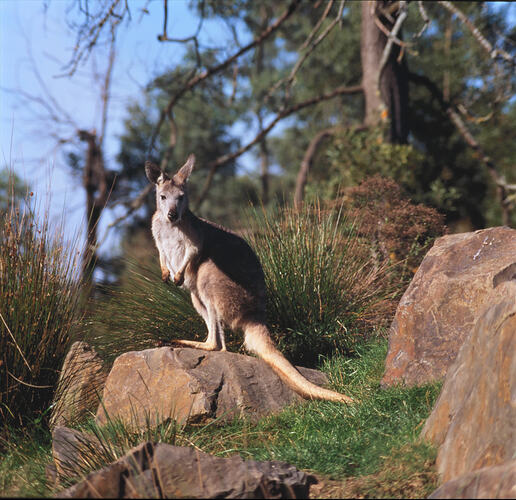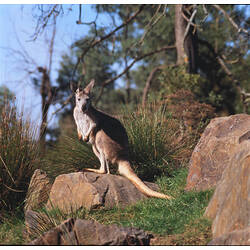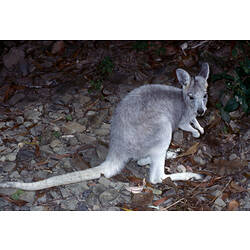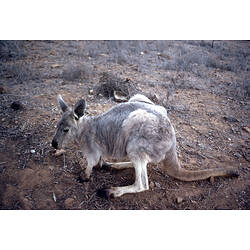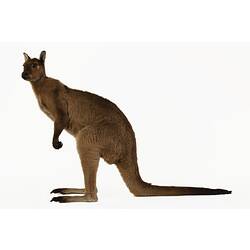General Description
Body fur colour varies from light brown to black. Lower legs and feet are black. Long fur. Body up to 1.1 m, tail up to 90 cm.
Biology
Most active at night (nocturnal) and at dawn and dusk (crepuscular). Mostly solitary. Common Wallaroos give birth throughout the year, but in dry areas the timing is dependent on rainfall. A subspecies, the Eastern Wallaroo, is listed as endangered in Victoria.
Distribution
Mainland Australia, excluding Cape York, eastern coast, and southern coast.
Habitat
Open woodlands, as well as rocky and mountain areas.
More Information
-
Animal Type
-
Animal SubType
-
Brief Id
Long fur, black feet and lower legs.
-
Colours
Grey, Brown, Black
-
Habitats
-
Where To Look
-
When Active
Nocturnal, Diurnal
-
Diet
Herbivore
-
Diet Categories
Grasses
-
Endemicity
-
Conservation Statuses
CITES: Not listed, FFG Threatened List: Endangered, EPBC Act 1999: Not listed, IUCN Red List: Least Concern
-
Taxon Name
-
Common Name
Common Wallaroo
-
Other Names
Euro
-
Kingdom
-
Phylum
-
Subphylum
-
Class
-
Superorder
-
Order
-
Suborder
-
Family
-
Subfamily
-
Genus
-
Species Name
robustus
